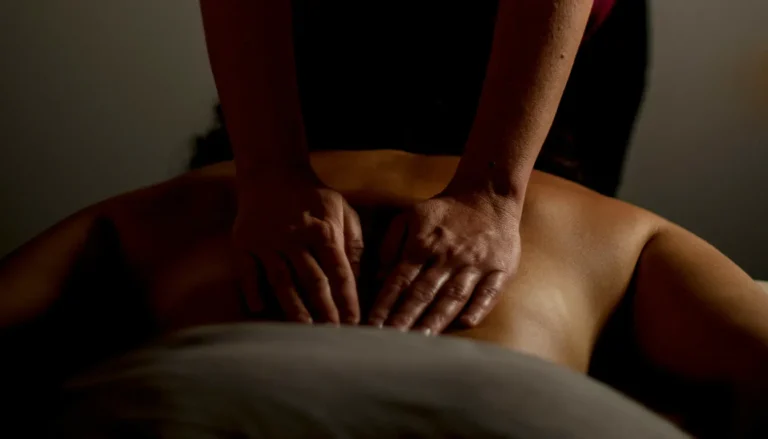In today’s world, the holistic therapy approach is a powerful way to promote overall wellness. It looks at the whole person, not just separate symptoms. Holistic therapy combines physical, mental, emotional, and spiritual health for complete healing. It helps people find their inner strength and boost their ability to heal themselves1.
Studies show holistic practices greatly benefit mental health and well-being. A 2019 study revealed that teenagers in a holistic stress management program felt less stressed. They also experienced less anxiety and depression than others2. Holistic therapy includes wellness techniques like mindfulness meditation, yoga, and breathing exercises. These practices are key to reducing stress and enhancing life quality1.
What is Holistic Therapy?
Holistic therapy offers a unique treatment focusing on the whole person. It looks at emotional, mental, physical, and spiritual needs. Unlike traditional methods, it covers all aspects for better well-being. It combines old and new techniques, making it diverse. Practices like yoga and mindfulness help in healing.
This therapy aims to improve the whole person, boosting self-worth and understanding. It tackles various issues like anxiety and work stress3. Methods include cognitive therapy and creative arts4. These techniques help relieve stress and aid in physical and mental health3.
Studies show holistic therapy helps with stress and emotion control5. It’s adaptable, working in solo or group sessions4. Holistic therapy supports a balanced, happy life as part of an overall wellness plan.
Understanding the Holistic Therapy Approach
Holistic therapy treats people as complete beings. It connects the mind and body. It focuses on balancing physical, emotional, and spiritual health. Well-being comes from their harmony.
This approach makes the therapist and client work closely. They dive deep into the client’s issues. This helps the client accept themselves and grow in awareness.
Definition and Core Principles
At its core, holistic therapy finds the reasons behind problems, not just their symptoms. It uses varied methods like yoga and mindfulness. These tools help both therapists and clients. Benefits of holistic mental health approaches go beyond basic coping skills. They improve mental and physical health.
Clients learn to see how every aspect of themselves comes together. This holistic view helps them understand themselves better. Techniques such as biofeedback and massage support healing. Holistic therapy is a cost-effective way to boost overall health67.
Historical Roots of Holistic Therapy
Holistic therapy has roots in ancient healing traditions. These come from cultures that saw the mind, body, and spirit as connected. Ayurvedic medicine and Indigenous practices influenced its beginnings.
Over time, holistic therapy merged old and new techniques. It offers a broad range of strategies for individuals. Today, many people turn to holistic methods. They look for natural, gentle ways to meet their health needs67.
| Aspect | Description |
|---|---|
| Physical Health | Focuses on the body’s needs and functions, incorporating exercise and nutrition. |
| Emotional Health | Addresses emotional challenges through therapeutic expressions like art or music therapy. |
| Spiritual Health | Emphasises personal growth and self-awareness, connecting with one’s inner self. |
| Environmental Factors | Considers external influences impacting health, promoting natural living. |
| Integrated Techniques | Utilises a mix of methods tailored to the individual’s holistic needs. |
Benefits of the Holistic Therapy Approach
Holistic therapy improves your well-being significantly. It looks at health from all angles, tackling physical, mental, and emotional issues. Individuals are encouraged to take an active role in their health, using personalised wellness strategies.
Comprehensive Well-being
Individuals notice big changes in their mental and physical health with holistic therapy. It provides custom treatment plans based on each person’s unique needs. To boost overall health, it incorporates exercise, healthy eating, and mindfulness, improving life quality and resilience.
Connection Between Mind, Body, and Spirit
Holistic therapy stresses the importance of connecting the mind, body, and spirit. It helps in managing stress and increasing self-awareness by regulating emotions. This approach merges mental and physical health, prompting people to discover their inner strengths. It aims for long-term health management, not just quick fixes, making it key for lasting well-being.
Key Practices in Holistic Therapy
Holistic therapy focuses on the mind, body, and spirit to promote overall wellness. Mindfulness and meditation are key to mental clarity and emotional stability. These practices help achieve comprehensive well-being.
Mindfulness and Meditation
Mindfulness and meditation are core to mental health. They help foster awareness, reduce stress, and improve emotional balance. Adding mindfulness to therapy boosts overall well-being and promotes lasting health benefits.
Nutrition’s Role in Holistic Healing
Nutrition is crucial in holistic therapy for physical and mental health. A diet full of essential nutrients boosts energy and mood. Good nutrition is key in the healing process and maintaining wellness.
Physical Activity and Exercise
Exercise is important for both physical fitness and mental health. Regular activity boosts endorphins, improving mood. This shows how important exercise is in a holistic approach to health.
| Practice | Description | Benefits |
|---|---|---|
| Mindfulness Meditation | A practice that focuses on being present and fully engaged in the moment. | Enhances mental clarity and reduces anxiety. |
| Nutrition | Involves consuming a well-balanced diet to support health and healing. | Boosts energy, stabilises mood, and supports mental health. |
| Physical Activity | Regular exercise routines aimed at improving physical fitness. | Promotes better mood, encourages social interaction, and improves physical health. |
The combination of mindfulness, nutrition, and physical activity creates a balanced lifestyle. This enhances well-being significantly. Holistic therapy plays a big role in today’s health world8.
Conditions Treated by Holistic Therapy
Holistic therapy is known for helping many health issues, focusing on mental well-being. It’s good at managing anxiety and stress. Stress management techniques like mindfulness and breathing exercises help. They let people handle their feelings better, improving their life. There’s a rise in choosing holistic methods for their therapeutic benefits, seen in both adults and kids who’ve tried complementary medicine9.
Managing Anxiety and Stress
Holistic therapy is also great for physical health, merging old and new treatments. It’s vital for those with physical health issues and managing pain. The natural healing it promotes can ease chronic pain. This improvement comes from customized plans that include exercise and nutrition10.
Treating Emotional Disorders
Holistic therapy excels in treating depression and trauma, helping individuals explore and understand their deep-seated issues. It boosts emotional control and emotional health treatment. These therapies aid in mental health by encouraging better coping ways. Holistic therapists guide people through their mental challenges, important for overcoming anxiety and depression10.
FAQ
What is the definition of holistic therapy?
Holistic therapy looks at the whole person—emotions, mind, body, and spirit. It doesn’t just focus on specific illnesses. Its goal is full wellness, considering all parts of health are connected.
What are the core principles of holistic therapy?
The main ideas behind holistic therapy involve seeing health as a big picture. It highlights the mind-body link. It suggests well-being comes from balancing all parts of life, where each aspect affects the others.
How did holistic therapy originate?
Ancient practices like Ayurveda and native healing ways are holistic therapy’s roots. These old ideas have grown into today’s holistic therapy. It’s now a popular way to seek overall health solutions.
What are the benefits of holistic therapy?
Holistic therapy boosts overall well-being. It makes people more aware of their health. It helps reduce stress and find emotional balance. This empowers everyone to manage their wellness better.
How does the mind-body-spirit connection play a role in holistic therapy?
The bond between mind, body, and spirit is key in holistic therapy. It uses practices that strengthen this link. This boosts emotional control, reduces stress, and improves health. It also helps people understand themselves better.
What mindfulness practices are used in holistic therapy?
Holistic therapy uses mindfulness and meditation a lot. These methods clear the mind, cut down stress, and balance emotions. They make therapy more effective and support healthy living in the long run.
What role does nutrition play in holistic therapy?
Eating right is crucial in holistic therapy. A good diet supports mental and physical health. It boosts wellness and healing. Making smart food choices is part of reaching health goals.
How important is physical activity in holistic therapy?
Being active is a must in holistic therapy. It keeps you fit and lifts your spirits. Exercise helps connect mind and body. It’s important for healing in a holistic way.
How does holistic therapy manage anxiety and stress?
Holistic therapy uses mindfulness, breathing ways, and changes in lifestyle to tackle stress and anxiety. These tactics help people take charge of their thoughts, making life better.
Can holistic therapy treat physical ailments?
Yes, holistic therapy combines common and alternative treatments for physical problems. It focuses on pain relief and natural healing. This approach is well-rounded.
How does holistic therapy address emotional disorders?
Holistic therapy works well for emotional issues like depression. It helps people reflect and find emotional balance. This leads to understanding the causes of their feelings and finding better ways to cope.





